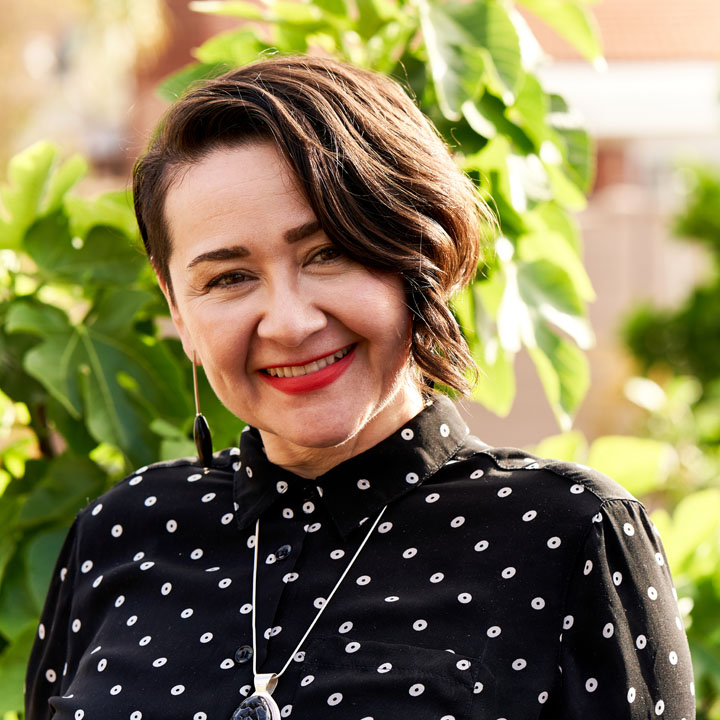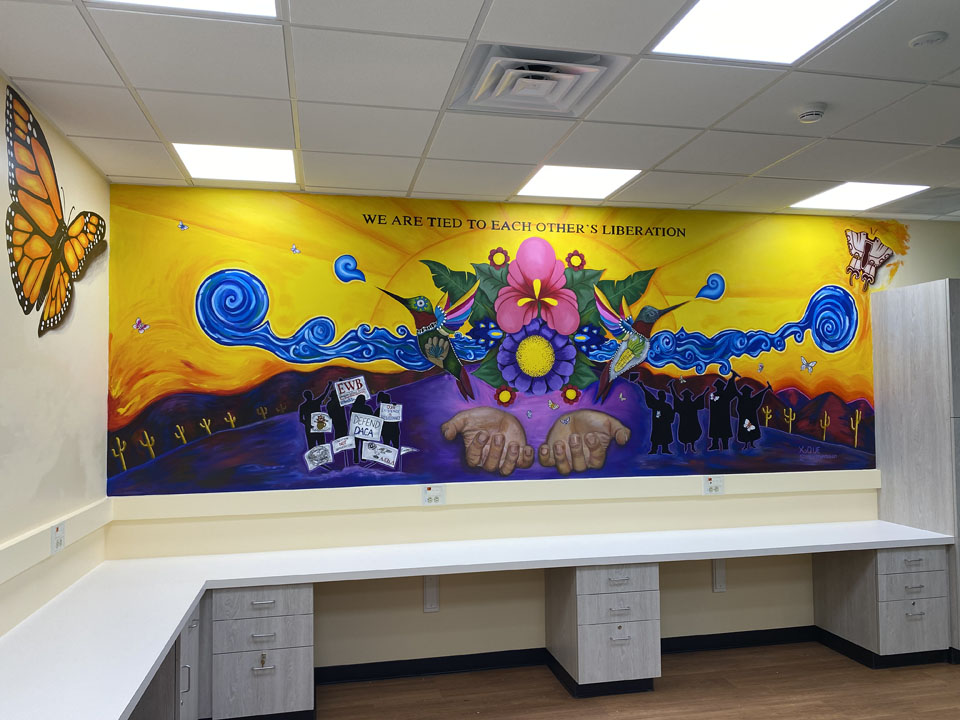
Berenice Badillo '04 (she/her) is a Spanish-speaking, licensed Marriage and Family Therapist, Board Certified Art Therapist, and a social-emotional learning (SEL) consultant. Badillo actively uses art to promote community social justice and healing as a multimedia community artist and Chicano Park muralist. She strives to document and encourage the creation of communal cultural wealth through murals, sculpture, pop-up art galleries, and the co-creation of counter-stories. She believes in the importance of representation and views art expression as a means to amplify the voices of BIPOC and elevate their community’s narratives to broader audiences.
How did you first discover Art Therapy, and what inspired you to pursue this field?
As an immigrant from Mexico, I have always found myself straddling intertwined cultural and subcultural identities my entire life. I had many tumultuous years growing up. I started working at a homeless shelter at age 21, and just started painting on the dilapidated walls and furniture with the youth. I realized that creating art created much needed dialogue, ownership, and pride. This encouraged me to create an afterschool program, and I started co-creating community murals and mentoring unhoused youth. I co-created a monthly hip hop event called ELEMENTAL that showcased the art of local youth and was recognized by the city of San Diego and the state of California and became a Community Fellow through The California Wellness Foundation Violence Prevention Initiative. It was then that I realized that art was a vehicle for change and could be used as a powerful tool to heal.
As a mental health clinician/advocate, can you describe your work and how you integrate the arts into your work?
I am a Spanish speaking Licensed Marriage and Family Therapist, Board Certified Art Therapist, with a PhD in art therapy as well as an illustrator, community muralist, poet, activist and multimedia artist. I have dedicated most of my career to communities of socioeconomic need and encourage the co-creation of communal cultural wealth through murals, sculpture, pop up, art galleries and counter stories. I illustrated an award-winning book, Am I Blue or am I Green? that explores the identity and impact of a boy's life with parents that are undocumented in the United States. I strongly believe that there is an importance in representation, and I see art expression as a means to both amplify the voices of BIPOC and disseminate the stories of their community where it can be witnessed on a grand scale.
Reflecting on your time at LMU, what experience or moment stands out as particularly valuable to your personal and professional growth?
While at LMU in 2004, I felt that my social activist approach was misunderstood and not supported. It was difficult to succeed in that environment. I was a minority in a sea of white experiences and was often silenced by my teachers and students. This challenged me to keep on course and work even harder. This microcosm was a taste of the real world at that time and LMU would strengthen my passion and drive which helped me grow professionally and personally.
Can you walk us through your professional journey since graduating, including any key milestones or turning points?
After graduating LMU, I started working at a shelter for unhoused youth and at a program with trafficked teens. I was privileged to be part of developing this new program, getting trained in EMDR (eye movement desensitization reprocessing). I then went on to work at the County of San Diego with people with severe and chronic mental illness where I created an art therapy program. Currently I am the (SEL) social emotional learning consultant for the New Children’s Museum in San Diego where we are creating fourth and fifth grade programming. I am in private practice and take more time to be an artist. I am the co-founder of XoQUE Art in Motion, an all-women multi-media group determined to evoke change on how the U.S./Mexico border is portrayed and represented in the cultural imaginations.
What advice would you offer to students who are just starting their journey in this field, and what key skills or mindsets do you believe are most important for success?
Higher education is a sacrifice and requires dedication and grit. I would encourage students to understand that imposter syndrome happens to everyone and they will need to walk through to the other side of fear, everything we need is on the other side of fear. I would encourage to not let anyone get in their way of their passion and that they do not have to let go of who they are culturally to be a professional. Most importantly, I would advise that not every thought deserves a tongue. Also, therapy, go to therapy.

